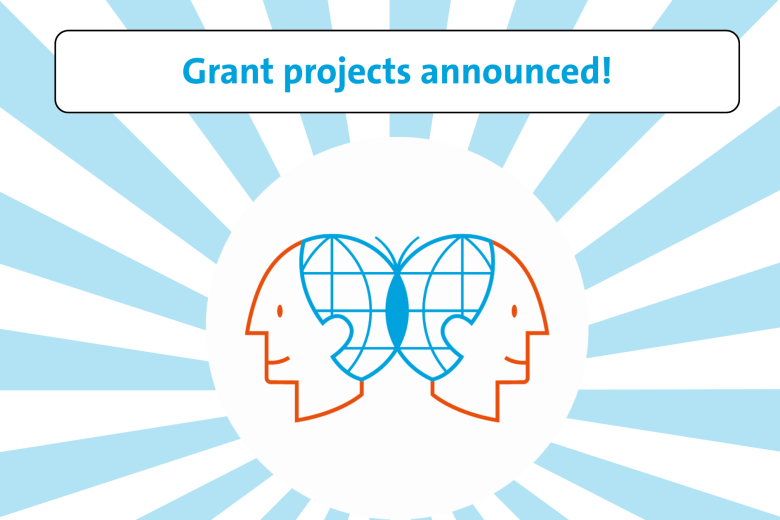Alumn Remco Beckers works at Bureau Europa
Remco Beckers, project coordinator at the architecture institute Bureau Europa, studied Arts and Culture and the Research Master in Cultures of Arts, Science and Technology in the hope of going into research. Although an academic career is not yet on the cards, he’s happy to have completed these interdisciplinary programmes. “I look at the world differently now; it shaped me as a person.”
His initial plan was to study Classics: ancient Greek and Latin. But Classics is not on offer in Maastricht, and Beckers felt he was too young to move out of home in Bocholtz straight out of high school. So he decided, somewhat arbitrarily, to study Arts and Culture instead. The clincher was the broad scope of the programme, including philosophy, history and literature. “I’d also heard it was possible to stay on as a researcher after the programme. I didn’t know exactly what that meant, but I began my studies with that romantic notion in mind. I had – and still have – academic ambitions.”
Seeing life differently
Looking back, the decision was a stroke of luck. “Along the way, I discovered the programme really suited me. Arts and Culture students learn to look at the world through an interdisciplinary lens. The world is deliberately designed and it’s important to understand that. You can’t just accept something as objective truth; there are many perspectives to consider. The programme changed the way I see the world, shaped me as a person. It was an enrichment.”
He learnt just as much from his fellow students. “Every Wednesday afternoon we’d sit outside at Lure or our local, De Perroen, talking for hours about film, theatre, art, but also about trivial things. Or even about the Bible: its cultural value and appeal, its power to shape the world, despite being written in another time and place. We weren’t religious; we were critical. In a somewhat pedantic and condescending way, in hindsight, but then, we were barely 21.”
Golden opportunity
His transition from university to work was less smooth. Beckers applied for various PhD positions, in vain. The reason, he figures: bad luck. In the meantime, he did an internship at the Huis voor de Kunsten, researching the regional language Limburgish, and spent two years working at the South Netherlands Philharmonic. The vacancy at Bureau Europa was a golden opportunity. His broad education and interests unexpectedly paid off. “I was the only candidate who wasn’t an architect. Saskia van Stein, the director, later told me I got the job because of one thing I said. She sees architecture as the shaping factor in an environment. I responded that, if that’s the case, essentially everything is architecture, as everything is constructed. That’s exactly the guiding principle of Bureau Europa.” (text continues below picture)

Juicy anecdotes
His work consists of organising lectures, debates and city walks on themes such as the democratisation of architecture. “Architects are no longer solitary geniuses who design buildings or even entire neighbourhoods. Increasingly, they work in collectives.” Early on he also organised an exhibition: Unvollendete. Nooit gebouwd Maastricht [Unfinished. Never Built Maastricht], on buildings that were designed but never came to fruition. “I really liked that many visitors shared juicy anecdotes themselves. There was a former mayor who was such a fervent advocate of a bridge planned in 1967, the Zuiderbrug, that he was willing for it to run through his front garden. And that actually ended up happening, when the Kennedybrug was built.”
Shivers
Beckers is particularly proud of an exhibition he organised later: Stucco Storico, het verhaal achter een ambacht [Stucco Storico, the Story Behind a Craft], a history of 18th century decorative stucco in the Euregion. “At first I thought: what can you even say about stucco? But gradually you discover its impact. It’s thanks to stucco that people can design the interiors of their homes to their own tastes. But my favourite part was tracing the lives of the stuccatori. They came to this region from Switzerland and built lives of their own here. Those tangible reminders, a signature here or a doodle there, they give me shivers.”
Porcelain coral
Beckers is currently working on a new exhibition, with the title A Rose is a Rose is a Rose. Het Landschap als Drager. [Landscape as medium]. “It’s about our outlook on nature and, therefore, ourselves. Nature and technology are becoming increasingly intertwined. We want to show that this can also be a positive thing. For example, designers are mitigating the damage to the Great Barrier Reef with 3D-printed porcelain coral. But why? Where does our view of nature come from? And how does it determine our landscape architecture?”
Full disclosure: he’s still interested in pursuing a PhD. “I love it at Bureau Europa and I hope to stay for a long time, but someday I want to go into academia. I used to think that was something I had to do before I turned 30, but now I think that’s silly. I can do it whenever; age doesn’t matter. Learning is a lifelong process.”
Also read
-
Global Citizenship for Sustainable Development grant winners announced
We are proud to announce that three projects have received funding from the Global Citizenship for Sustainable Development network at Maastricht University.

-
Inaugural lecture Jan Willem van Prooijen
What drives people to embrace radical conspiracy theories, sometimes with far-reaching consequences for society? During his inaugural lecture on Friday 27 June, Prof. Dr. Jan Willem van Prooijen (radicalisation, extremism, and conspiracy thinking) will address this urgent question.

-
Update 25 June
Last night a UM building at the Bouillonstraat was daubed with paint and slogans. A sad expression of vandalism. UM has filed a report.
